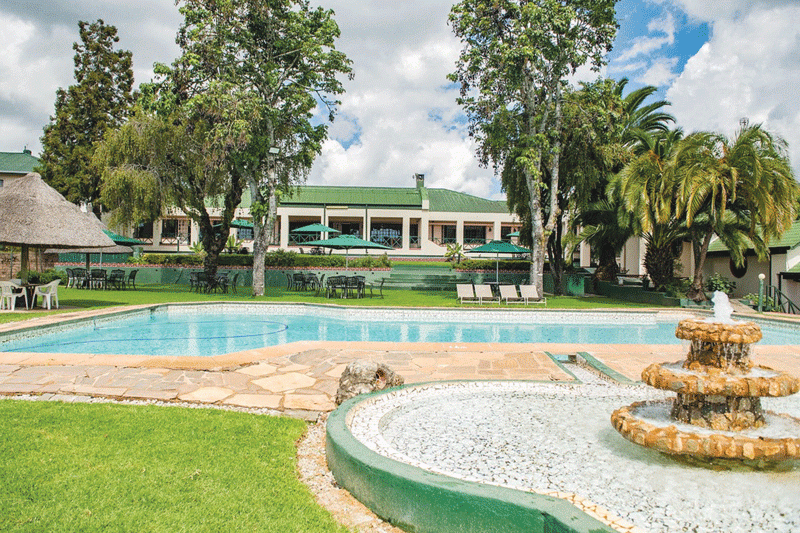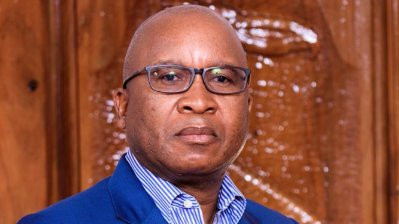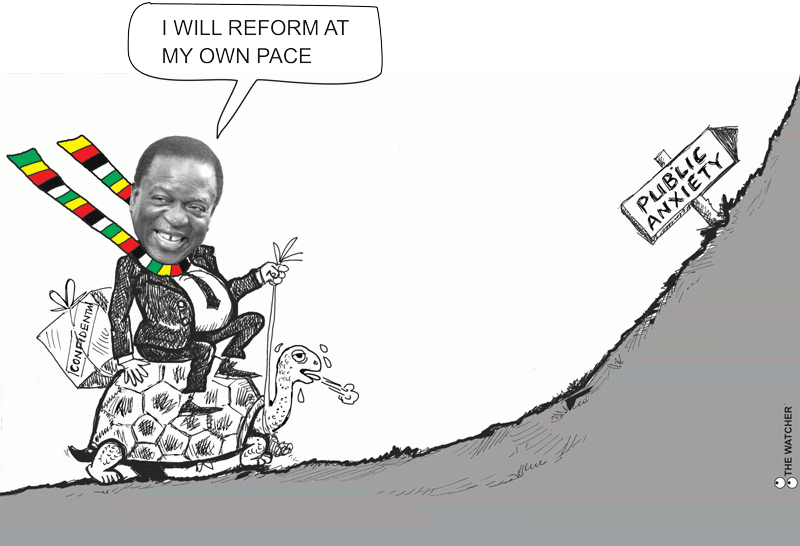
Seamless railway operations are crucial for the establishment of a dynamic economy. Without a strong railway network, it can be almost impossible to develop a modern and competitive economy.
In most competitive economies, rail transport moves between 20%-40% of a country’s total freight. Rail also offers a number of desirable benefits.
Firstly, it can be cheaper for bulky commodities (iron ore, coal, chrome, grain, carshipments). Secondly, certain commodities are only significantly transported by rail. These include iron ore, coal and chrome, among others.
Without rail, 90% of such resources will remain idle at the miner’s plant (site), since the effect of trucks can be insignificant with such resources. Thirdly, since one train can substitute 500 trucks, rail ensures that road networks have extended life (as trucks are reduced) and that congestion on the roads is reduced.
However, when a country’s rail systems becis inefficient, the effects are felt through immediate economic regression, in most cases. By way of an example, using a case in neighbouring South Africa, it can be easy to perceive the immediate effects of a struggling railway system. In the first six months of 2023 alone, Kumba Iron Ore mining company, lost R6 billion (US$ 300 million) from rail underperformance, as it had to stockpile minerals at its site, which Transnet Freight Rail could not deliver to the ports for export.
Transnet’s inefficiency led to several more South African mining companies failing to deliver their goods to customers, on account of the same limitation. Thatsituation is also similar with most bulk-commodity mining companies in Zimbabwe, which depend on the National Railways of Zimbabwe (NRZ) for their sustainability. Some local miners will not be able to expand production, neither will new investments be made, until an assurance of NRZ’s capability is provided.
Due to the overwhelming influence of railway on an economy, this article will explain the key changes and improvements which are imperative, in order to enhance the country’s railway logistics' efficiency. More details on rail’s importance are also provided.
Establishing accurate records
- Zim headed for a political dead heat in 2023
- Record breaker Mpofu revisits difficult upbringing
- Tendo Electronics eyes Africa after TelOne deal
- Record breaker Mpofu revisits difficult upbringing
Keep Reading
In other countries, records are available which show the total amount of freight which is transported within the country, each year. For example, in South Africa, in 2020, 732 million tonnes of freight were moved through the length and breadth of the country. Transnet Freight Rail moved about 180 million tonnes, from that total. This also represented a decline in operations, as the company had moved as much as 220 million tonnes of freight, just two years prior to that(in 2018).
To arrive at total tonnage flows in the economy, South Africa calculates domestic transport activities in, extraction (mining and agriculture), intermediate manufacturing, final manufacturing, consumption (consumer goods), alongside imports and exports.
Since South Africa has such records, it is easier for them to determine whether there has been growth in the overall freight logistics sector (both road and rail, etc), or not.
Also, the changes in the share of road, rail, pipelines and air, in the total freight transported within the country can be determined, which helps to quickly take noteof sector-specific changes when they begin to develop.
For example, the observed decline in railway transport’s share, led President Cyril Ramaphosa to establish a National Logistics Crisis Committee, whose effectiveness will be measured through the change in metrics such as the improvement of railway’s percentage share in the national logistics system.
In the same manner, Zimbabwe will need an annual freight logistics report which shows how much freight is being moved across the country, and the share that road, rail, pipelines and air have in the total figure.
This will assist in revealing the amount freight which the National Railways of Zimbabwe (NRZ) is losing to trucks, among other things. It is known that the NRZ used to move 18 million tonnes of freight, yearly, in its prime (in the 1990s) but the nation now needs to move beyond such old data and embrace comprehensive, dynamic and updated information on the overall, national freight logistics sector.
Right-sizing of the railway track
A study of South Africa's national freight logistics commissioned in 2023, shows that Transnet hasas much as, 18 907 kms of railway track under its management. However, not all of it is being fully utilized. For example, the 2 241 km which transports minerals (bulk mineral corridors) are only 12% of the total route length of 18 907 km.
Those bulk mineral corridors, also have 61% freight potential and are the most profitable, contributing about two-thirds of, both, tonnage flows and revenue to Transnet. Also, the 4 818 km track which connects major cities in the country (also known as core rail networks) are only 25% of the total route length of 18 907 km but have an impressive freight potential of 34%. These figures show that, the two (bulk mineral corridors and core rail networks) constitute only 39% of total route length (25% + 14%) whilst they have an overwhelming 95% freight potential (61% + 34%).
Transnet is now considering keeping only the 7 059 kms which comprise the bulk mineral corridors and the core rail networks, whilst itsuspends the rest of the network which is not profitable (13 341 km). Since maintaining a railway track in good condition is understood to be extremely expensive, it is highly likely, that Transnet will reduce the size of its total railway network.
In that same regard, the NRZ also needs to do an audit on its railway track and determine which unprofitable parts of the network to suspend, whilst it keeps open the profitable ones. The cost savings on maintenance, security, repairs, etc, can be used to improve security on the profitable part of the network, or some other fruitful endeavour.
Bulk minerals , a profitable railway
In order to make the NRZ profitable, bulk mining activities which include coal and iron ore extraction will need to be revived in Zimbabwe. The country actually has enormous coal resources which have been idle for decades, as about 90% of Zimbabwe's coal is used for the sole purpose of generating electricity. Only a tiny fraction is destined for exports. In that regard, new extraction companies will be required in order to utilise the country's resources, earn foreign currency and support the NRZ, through providing demand for freight logistics. In South Africa, for example, only coal, iron ore and magnetite are responsible for about 60% of Transnet Freight Rail’s revenue. Therefore, the revival of the bulky mineral sectors, will be beneficial to the NRZ.
In that regard, the Presidency should see to it that, explorations and extraction for coal, iron ore and other bulk minerals are expedited. Whilst Dinson Iron and Steel Company (DISCO), ZISCO and several other bulk mining companies have began or are planning to resume extraction, the government should also ensure that the NRZ is capacitated to provide them with the essential transportation and that there are no bottlenecks.
‘Rent to buy’ arrangements
The NRZ is in a state where it lacks the right number of locomotives, whilst it also does not have the financial capability to purchase new ones, independently. Reports indicate that, the company needs to purchase 122 locomotives, 6130 wagons and 170 coaches, so that it operates at full capacity (at current levels of productivity). In order to increase the rolling stock using alternative trading methods, the company may check with Transnet of South Africa and try to secure some of the foreign company’s older locomotives and wagons, in a “rent to buy” arrangement. The arrangement will have NRZ commit to making payments regularly for the amount of mileage which the trains have travelled or on a monthly or bi-yearly basis.
Such a deal may find success because Transnet may have idle rolling stock within its almost 2000 locomotives. Moreover, since the NRZ will request older rolling stock, such investments are known to be unreliable in the railway sector.
Therefore, a “rent to buy” agreement which pays for mileage travelled will ensure that the risk of paying for instalments on a broken locomotive are eliminated. Moreover, since South Africa is Zimbabwe’s neighbour, Transnet Engineering personnel can be easily available to rectify any mishaps or challenges pertaining to their rolling stock.
The same purchase arrangements can also be requested in markets far off from Zimbabwe, as long as both parties are clear on the contractual outcomes of payments based on mileage travelled. This will enable the NRZ to pay for its rolling stock through the funds which it raises from its customers in the domestic market.
Security of railway infrastructure
In South Africa, in Transnet's 2022/ 23 financial year, there was largely the theft of 10 km (or more) of railway cables each week, throughout the year. The steel track (rail road) and trains themselves, were also subject to vandalism and theft. This is not a new phenomenon, as it has been ongoing for several decades.
Transnet has tried to used its own security personnel to address the problem. It has even tried using private security companies on an "outcomes-based" approach, whereby no payments are made when there is theft. However, this has also failed to solve the problem. The recently published South African freight logistics roadmap, takes the matter up again and commits to employ greater use of the police and army in an attempt to solve the problem.
However, there is a strong suspicion that the theft is being coordinated by rogue employees of the company with their external accomplices. It is on this basis that some experts have proposed that, in order to secure the network, there needs to be impermeable security along the whole railway network. Theft and vandalism will, therefore,only cease, when the rogue employees are convinced that the security is now entirely robust.
This however, is a task beyond Transnet's capability in terms of available finances and human resources. In that regard, the experts are also encouraging the government of South Africa to take over the responsibility and costs of securing the railway network, instead of surrendering this role to Transnet. They will then use as much police, soldiers, intelligence officials and other state resources, to secure the network themselves as central government. Similarly, the government of Zimbabwe should also take up the responsibility of securing the domestic railway network itself, instead of expecting the NRZ to perform this insurmountable task. Such crimes can only be deterred by major national resources, instead of having the NRZ to hold the responsibility.
Effects of an efficient railway system
A functional railway system provides plentiful benefits to the overall economy. When more freight is transported by railway instead of road (on trucks), the roads are preserved and citizens are safer. It is reported that, passenger vehicles render less than 1% damage to roads, when compared to the effect of freight trucks. In that regard, the effects of Zimbabwe's great dependency on freight trucksis easily seen through broken roads, which have become vulnerable even when the smallest amount of rain falls. Thus, in order to save the existing road network in the country, the role of rail should be increased and expanded in the overall freight logistics system.
- Tutani is an entrepreneur, political economy analyst — [email protected].










